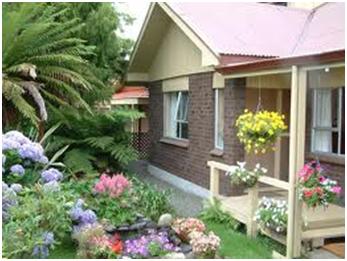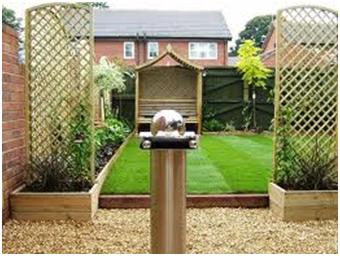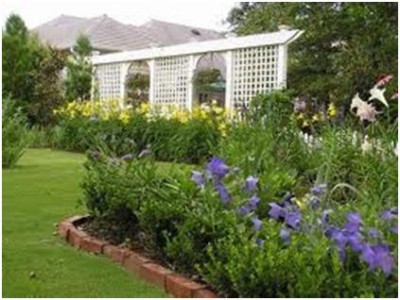Planting a home vegetable Garden

Planting a garden is not just to put the seeds and they will grow as young trees one day, it deals with many steps and proper care required every day from seeding to their full boom. Preparing the seedbeds, selecting seeds, and decision regarding their plantation are all the major steps to start a plantation in your garden. Will, you first sow the seeds and thinning them or you will try transplant? The decision may vary across the individual gardeners.
The first rule of the plantation is to prepare the soil before the plantation of any vegetable. This includes cultivating properly, adding organic materials, and maintenance of soil fertility. Early fall is the best time of year to begin the preparation of garden soil for vegetables. It is important to remove the sticks, stones, and other kinds of trashes in the garden. Removal of plant debris is also important because they cause harbor insects and diseases. Pest-free plant debris should be tilled into the soil. Breaking up of clods start in the freezing and cold winter season and fall tilled soil will need to be leveled early before starting of spring plantation.
To find out if the soil needs fertilizers in the coming season, take a soil sample during the fall. You can view more information about the soil samples through soil sample sheets. Don’t spade or till when soil is wet during breaking ground in the spring. If worked when too moist, heavy soil becomes a hard and a major reason for limiting growth for the entire season. If a handful of soil be can be pressed into a ball, stop the spading or tilling until it is drier.
If you have to purchase seeds, buy them at the start of the year because you will find more varieties and cultivars you need. Select the seeds on the basis of their time of maturity, tolerance against diseases, and intended use. For more information about best cultivars, see PM 607, Suggested Vegetable varieties for the home garden. Major types of seeds can be found in garden centers, mail order catalogs or purchase from e-gardening sites. To get the best germination, purchase new seeds every year. Depending on the vegetable crop, the leftover seed can be difficult to store and often germinate poorly, and preventing them from previous harvests will be risky indeed.
One problem associated with saving seeds of the previous year's crop is the possibility of getting plants that are not true type. Off-type plants can be produced because many vegetables are hybrids or easily cross-pollinate in the garden. Although off-type plants may be interesting, they will cause poor quality of crops. Therefore seed companies are harvesting seeds that are only from healthy and disease-free plants. Some seed producers also change their seeds before starting their sale. It goes through a chemical treatment to kill disease organisms in or on the seed. It also protects and prevents the seed rot and damping off.
Seeds that have been treated will be labeled in different categories and often colored brilliantly. When you are handling the seeds, do not forget to wash your hands.

A vegetable garden cannot be planted in just one day. Some vegetables grow best during the cool weather, while others require warm air temperature and soil. Factors such as wet or late spring may affect your planned planting schedule. Some vegetables can be planted or sown for fall harvesting because such crops will tolerate the cool temperature. Also, some vegetables can be sown multiple times for an extended harvest period.
Many vegetables like melons, gourds, cucumbers, squash, pole beans, and peas will naturally climb support and grow up rather than out. Chain link fence, chicken wire, tepees made from poles, strings, and trellises are the good support structures available.
Whether it’s flat or garden for the sowing of seeds, sow the seeds to allow for such ones which fail to sprout or die. During sowing, you can scatter the seeds or plant them in furrows or hills. It’s a general rule for the plantation that buries a seed in the soil for as deep which should not be more than three times of its thickness. If you have wrongfully planted a seed too deep, there is still the possibility of its germination but will die before it has to reach the surface.
If it is planted too shallowly, the wind or rain will blow it out before its germination, especially in sandy or lighter soils, it is important to plant the seeds deeper. Also, sow the seeds deeper in your garden when you are planting during the summer season. During the summer heat, the upper surface of the soil will be dried and the seed should be lower enough to get water from the soil. For a large garden, you may want to consider using a hand push seeder that spaces the seed at the correct distance.
Planting the seeds in straight rows has many advantages over other planting methods. It will make cultivation, insect control, and harvesting a bit easier. Square foot gardening and hill planting are also popular methods of planting the trees along with the straight rows plantation methods.
Thinning the Seedlings

‘Thick and think ‘is the way to sow the seeds, planting the seeds twice as close as the desired plant spacing and after germination, pull out the extras to provide growing space for the remaining plants. Thin roots crops before their taproots become fleshy. Many crops such as peppers, eggplant and tomatoes can be started indoors and later transplanted into the gardens. This head starts for the long season crops to grow and mature before frost started in winter.
Some gardeners find it easier to purchase plants from garden centers and greenhouses. When you are selecting the transplants, be selective, and dark green stocky plants are best other than yellow spindly ones. Before you are going to plant the transplant seeds, it is important to harden those 1-10 days before. Hardening the young seedlings will increase their food reserves and reduces the severity of transplant shock. For best results, give 2 cups of liquid starter fertilizer to each plant, but fertilizer burn damage can result if too much fertilizer is used.

Anny spent most of her time dwelling on useful things, and she drives all her research visible through her articles. Most of her unique and challenging topics include product reviews and descriptions of eco-friendly products and technologies.